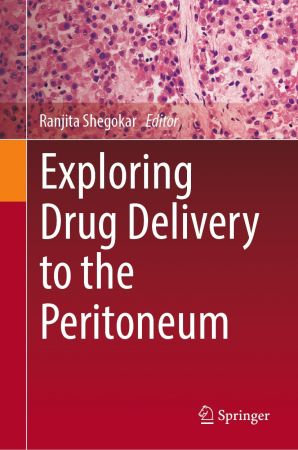探索腹膜给药技术

The Peritoneal cavity (PC) is the key metastatic site for intra-abdominal malignancies (e.g., GI tract and rectal cancer). PC sites can be used to target several other diseases where lymphatic drug delivery is desired without dumping large amounts of the drug. Till recently, it was thought that treatment with curative intent was impossible but that was challenged by the introduction of cytoreductive surgery (CRS) and heated intraperitoneal chemotherapy (HIPEC), and PIPAC (pressurized intraperitoneal aerosol chemotherapy). Recently, a growing number of preclinical and clinical studies advocate intraperitoneal (IP) chemotherapy as an alternative post-operative therapy for cancer. Although their effectiveness has been proven both experimentally and clinically, there is still little understanding of the role of drug delivery systems (DDS) in targeting drugs in the intraperitoneal (IP) cavity.
There are two main challenges one posed by IP cavity where the residence time of a small molecular weight drug (
In summary, challenges like delivery to IP cavity, tumor or organ-specific targeting, efficient tissue penetration, optimal cellular uptake and intracellular residence of a drug, biocompatibility, toxicity, etc can be easily solved by smartly designing functional drug delivery systems (both nano and micro). Nanotechnologies have always fascinated humans for several decades and are now widely explored in the biomedical field. Diverse types of nanoparticles are being explored around the world, some examples include biodegradable nanoparticles, green nanoparticles, polymeric nanoparticles, lipid nanoparticles, metal nanoparticles, graphene, carbon nanotubes, and several others. Now a day's nanoparticles are gaining interest for drug targeting of chemotherapeutic drugs, immunotherapy, and gene delivery. Whereas microparticles can be explored for delayed drug delivery to the peritoneal cavity due to relatively slow removal from IP fluid. Hydrogels or other adhesive drug delivery may help to enhance peritoneal adhesions; thereby maintaining the balance between benefit and risk. Overall, drug delivery systems are key in IP targeting. That means drug delivery specialist and clinician needs to be connected to get the best out of this route of drug administration.
腹腔(PC)是腹部恶性肿瘤的主要转移部位(如消化道和直肠癌)。腹腔病灶可用于靶向使用淋巴药物递送技术治疗其他疾病,而无需大量释放药物。最近,通过引入减瘤手术(CRS)和热灌注腹膜化疗(HIPEC),以及PIPAC(高压灌注腹内气雾化疗)的出现,人们认为根治性治疗是可能的这一观点受到挑战。近年来,越来越多的临床前和临床研究提倡在术后将腹膜化疗作为癌症的一种替代疗法。 尽管其有效性和临床效果已被实验数据证实,但对药物递送系统(DDS)在靶向腹腔内环境中的作用仍然了解不足。 IP环境中有两个主要挑战,即小分子药物停留时间过短。 总结起来,像靶向IP腔、肿瘤或器官特异性递送、高效组织穿透、药物在细胞和胞内稳态以及药物的生物相容性、毒性等挑战可以通过精心设计的功能性递药系统(无论是纳米还是微粒)来解决。纳米技术自几十年前就一直吸引着人类,而如今则广泛应用于生物医药领域。世界各地正在探索各种类型的纳米粒子,例如可降解纳米颗粒、绿色纳米颗粒、聚合物纳米颗粒、脂质纳米颗粒、金属纳米颗粒、石墨烯和碳纳米管等。现在,纳米颗粒正被研究用于化疗药物的靶向递送、免疫治疗以及基因递送。而微粒则可以探索在IP腔延迟释放药物的方法,以应对IP液中清除速度较慢的情况。此外,使用水凝胶或其他黏附性递药系统有助于增强腹膜粘连;从而保持利益与风险之间的平衡。总而言之,递药系统对IP治疗至关重要。这意味着需要药物递送专家和临床医生的合作才能充分发挥这种给药途径的优势。
本站不对文件进行储存,仅提供文件链接,请自行下载,本站不对文件内容负责,请自行判断文件是否安全,如发现文件有侵权行为,请联系管理员删除。
Wireless Communications for Power Substations: RF Characterization and Modeling
Projective Geometry: Solved Problems and Theory Review (True PDF,EPUB)
Kingship and Government in Pre-Conquest England c.500–1066
Numerical Algorithms with C
Mathematical Modelling Skills
The Art of Encouragement: How to Lead Teams, Spread Love, and Serve from the Heart (True PDF)
Principles of Cybersecurity
React in Depth (True/Retail EPUB)
The Complete Obsolete Guide to Generative AI (True/Retail EPUB)
IT-Forensik: Ein Grundkurs